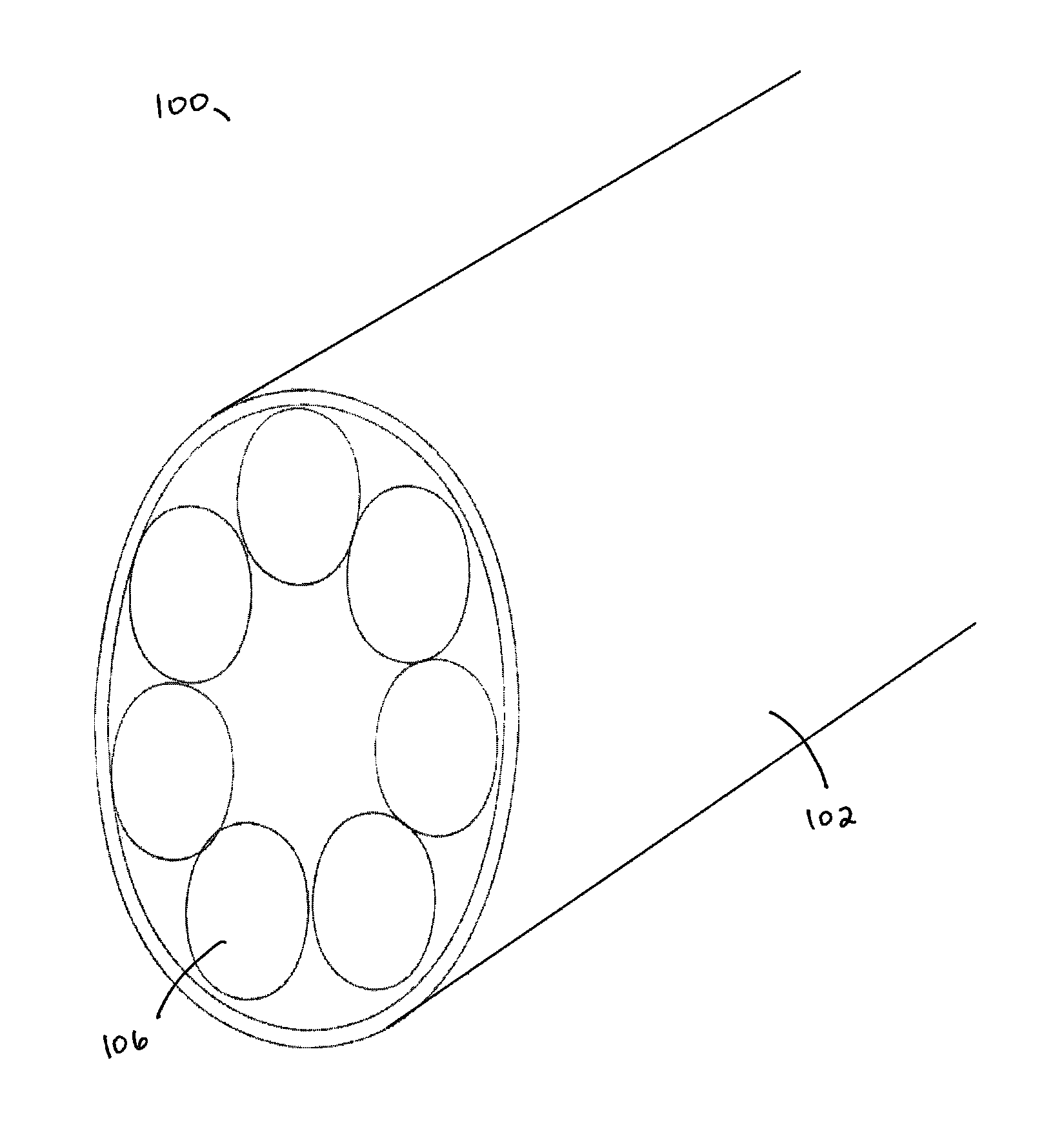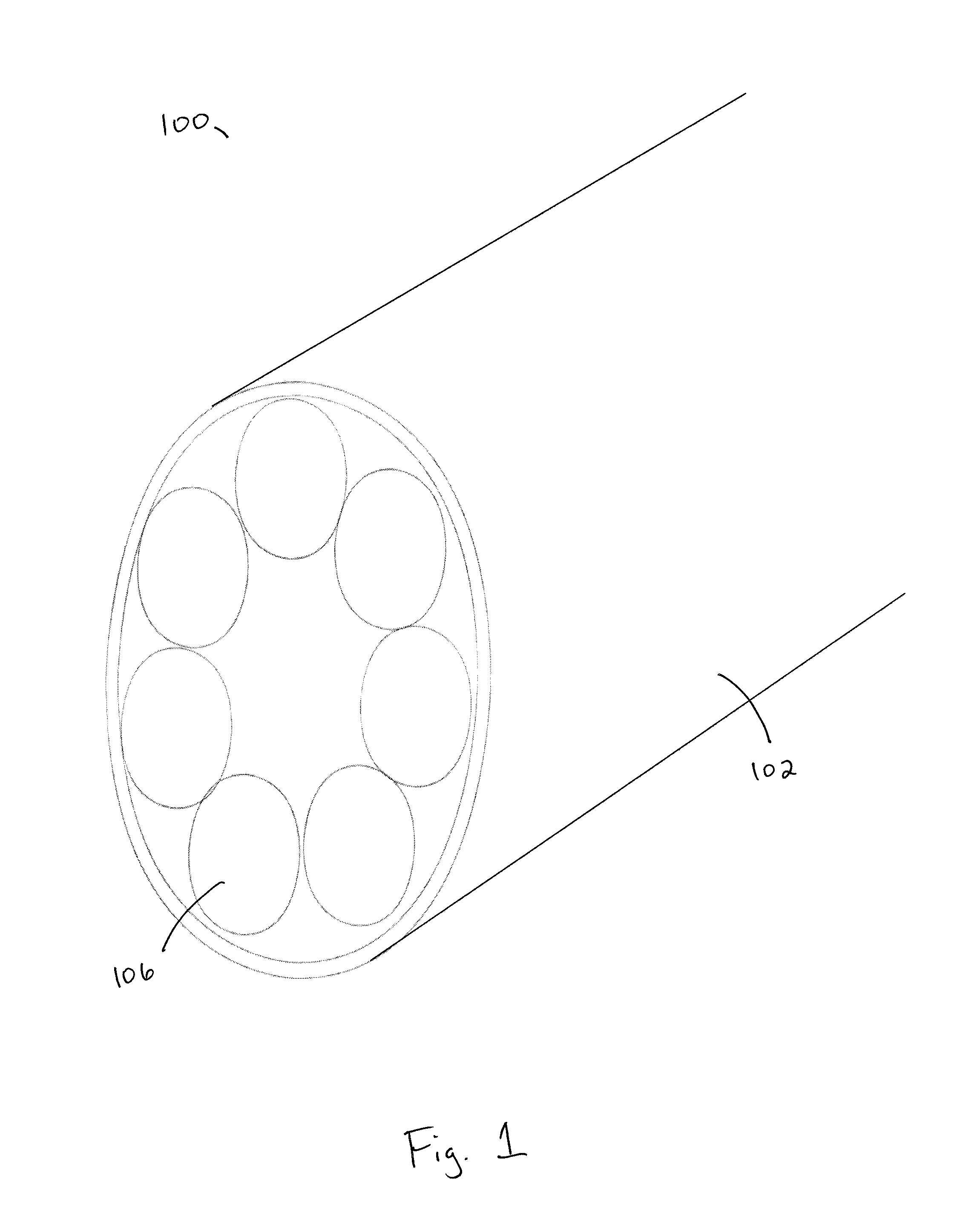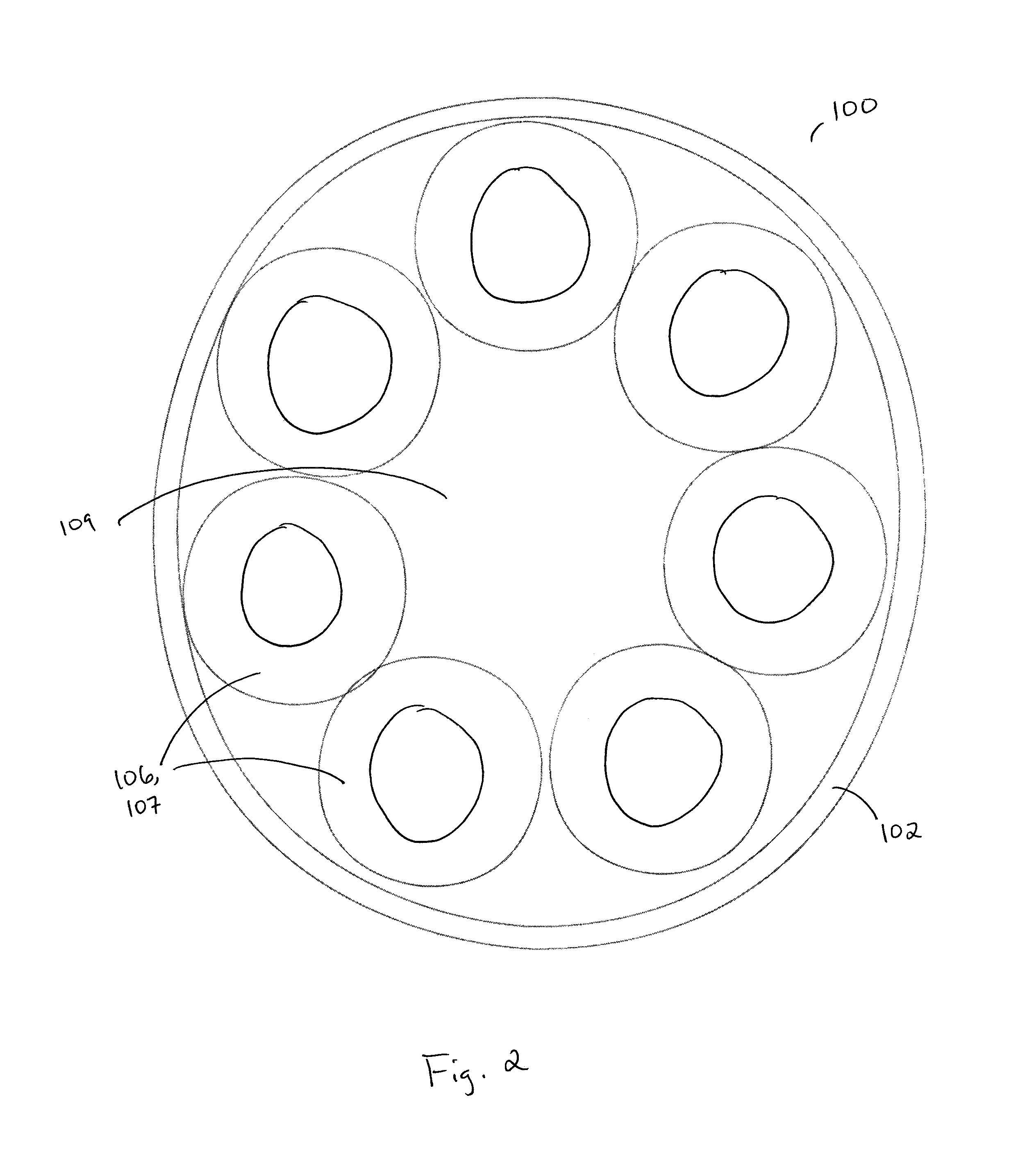Exothermic cutting rod
- Summary
- Abstract
- Description
- Claims
- Application Information
AI Technical Summary
Benefits of technology
Problems solved by technology
Method used
Image
Examples
Embodiment Construction
[0027]Cutting rods have typically been constructed with solid wires, with each wire comprising a pure metal or an alloy mixture of components. The alloy composition of the wires may affect the performance characteristics of the cutting rod. Performance characteristics may include any of the following: burn time, flame temperature, amount flame is focused, gas generation, worker safety, and oxygen requirements. Desired performance characteristics may include: longer burn time, hotter flame temperature, more focused flame, higher gas generation, higher worker safety, or reduced oxygen requirements, all as compared to traditional cutting rods, or any other reason that may benefit the user in some way. Therefore, it may be advantageous to alter the composition of the wires in order to achieve one or more of the desired performance characteristics. However, changing the composition of a solid alloy wire can be a very expensive and time consuming process. Using a cored wire comprising a p...
PUM
| Property | Measurement | Unit |
|---|---|---|
| Percent by mass | aaaaa | aaaaa |
| Percent by mass | aaaaa | aaaaa |
| Percent by mass | aaaaa | aaaaa |
Abstract
Description
Claims
Application Information
 Login to View More
Login to View More - Generate Ideas
- Intellectual Property
- Life Sciences
- Materials
- Tech Scout
- Unparalleled Data Quality
- Higher Quality Content
- 60% Fewer Hallucinations
Browse by: Latest US Patents, China's latest patents, Technical Efficacy Thesaurus, Application Domain, Technology Topic, Popular Technical Reports.
© 2025 PatSnap. All rights reserved.Legal|Privacy policy|Modern Slavery Act Transparency Statement|Sitemap|About US| Contact US: help@patsnap.com



